Compiled by Veronica M. Berounsky, Ph.D. ’90
Share Your News With Aboard GSO1980s | 1990s | 2000s | 2010s | 2020s | In Memoriam
1960s
Stan Chenoweth, M.S. ’63, who recently turned 91, donated to GSO his handwritten personal log of “Operation Debut,” the first cruise of R/V Trident, and the photos he took along the way. This cruise took advantage of the ship’s transit from San Diego, Calif. through the Panama Canal, past Puerto Rico and Bermuda, and finally to Narragansett, R.I. while taking samples and measurements at five coring and 60 hydrographic-biological stations enroute.
1970s
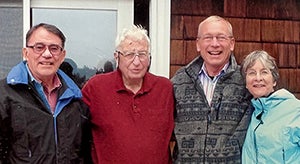
In October 2010, Peter Betzer, Ph.D. ’72, was the GSO recipient of a URI Distinguished Achievement Award because of his leadership as founding dean of the University of South Florida’s College of Marine Science. He recently shared a photo taken while he was in Rhode Island then to receive his award, of his major professor Michael Pilson, GSO Dean John Knauss, himself, and his wife Susan Betzer, Ph.D.’72.
Robert Ballard, Ph.D. ’75, Hon. ’86, was at Bollinger Mississippi Shipbuilding to tour the ship being built that bears his name, the USNS Robert Ballard. The ship, which will be managed by the Naval Oceanographic Office at the John C. Stennis Space Center in Mississippi, will travel worldwide to map the bottom of the ocean and measure water column parameters.
At the 2024 International Oil Spill Conference, one of the early “Quinnones”—students of Professor Emeritus of Oceanography James Quinn—and principal scientist at Exponent, Inc. Paul Boehm, M.S. ’73, Ph.D. ’77, presented with a colleague a paper on spills into the Santa Barbara Channel. His last two remining major oil spill investigations—oil from the ship M/V Wakashio running aground on Mauritius island and pipelines linking oil in the fishing town of Bodo in the Niger Delta—were recently completed and Boehm reports “he is 99.8% retired.”
Andrew Morang, M.S. ’78, and his wife live in Olympia, Wash., overlooking East Bay (southernmost part of Puget Sound). He remarks, “The sea is right below us. It reminds us of when we lived in Bonnet Shores and could see Narragansett Bay and hear the navigation marker bells. Here, we are waiting for that tsunami when the Cascadia subduction zone finally has the big rupture.”
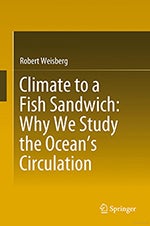
Robert H. Weisberg, M.S. ’72, Ph.D. ’75, writes “I decided upon retirement to write a book for a lay-person audience—high-schoolers or undergraduate—explaining why the ocean circulation affects just about anything that we experience on Earth.” The resulting book is Climate to a Fish Sandwich, Why We Study the Ocean’s Circulation.
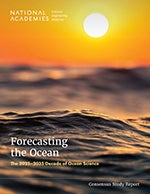
On February 20, the report “Forecasting the Ocean” from the committee for the 2025-2035 Decadal Survey of Ocean Science for NSF’s Division of Ocean Sciences was published, and the committee also gave a presentation online. Jim Yoder, M.S.’74, Ph.D.’79, was co-chair of the committee, which included Jim Zachos, Ph.D.’88, Carlos Garcia-Quijano who has a URI joint appointment in anthropology and marine affairs, former GSO Professor S. Bradley Moran and former GSO postdoctoral scholar Rick Murray.
Step Into the Spotlight
Check out our new GSO Spotlight series on the alumni section of the GSO webpage. We’ve just started this series, and we’d love to shine a light on you, too! Email vmberounsky@uri.edu and we’ll send you a brief form so we can feature your work and accomplishments.
1980s
Frances Goloway, M.S. ’81, writes from London that “it has been a very grey winter full of storms with heavy rain and gusts over 50 miles per hour, but recently we were treated to a rainbow in between showers.”
After 21 years as professor of geology at the University of Southern Mississippi, Dean A. Dunn, Ph.D. ’82, moved in 2004 to research grant management at a Washington, D.C. nonprofit and has not yet retired. Working for the American Chemical Society’s Petroleum Research Fund has meant looking for subject-matter experts to provide reviews for research proposals, enabling Dunn to keep up with many former GSO classmates and professors.
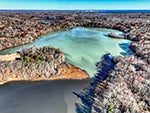
Last November 16, the Upper Pond on Narrow River (Pettaquamscutt Estuary) in Narragansett, R.I. experienced an overturn of the anoxic bottom water; people nearby could smell the sulfur that precipitated out. Steve Carey, Ph.D. ’83 (who took the drone photo), Veronica Berounsky, Ph.D. ’90, and David Borkman, M.S.’00, Ph.D. ’02, and Lucie Maranda, Ph.D. ’87, were among the scientists documenting this natural event that happens once every 15 to 20 years. They are continuing to work on the data to better understand the consequences of the event.
Marine Research Scientist Emeritus Bob Kenney, Ph.D.’84, is one of several co-authors on a study that quantified, for the first time, the risk for whale-ship collisions worldwide for blue, fin, humpback and sperm whales. The authors found that more measures could be implemented to reduce the chance of collisions.
The GSO Harpoon, an April Fool’s Day tradition at GSO since 1979, was emceed by Walter Berry, Ph.D. ’87 who presented a “Bay Campus Update” with AI generated photos, such as a unicorn on R/V Endeavor and acknowledged the late Neil Ross, founder of the Harpoon with a moment of hilarity (instead of silence). Stephen Licht, associate professor of ocean engineering, spoke on “Should I Crack That Book? Boredom, Fooling Yourself, and Flipping to the Last Page” and showed graphs on readership and reviews of several sci-fi series. Rich Bell, Ph.D. ’09, worked with GSO student Alex Rubin on “Observations of waves on the Bay Campus,” which included surf waves, Rossby waves, light waves, radio waves, and Bay Campus microwaves. Robert Rheault, Ph.D.’94, played the game “Not My Job” and answered questions about rowing.
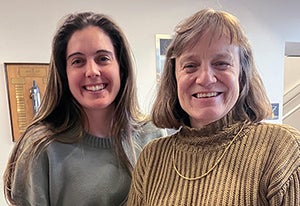
Amy Bower, Ph.D. ’88, senior scientist at Woods Hole Oceanographic Institution, was awarded the 2025 Henry Stommel Research Medal, the highest honor that the American Meteorological Society presents to oceanographers. On March 24, she was invited by the URI chapter of the Society for Women and Marginalized Genders in Marine Science to give a talk at GSO. Dr. Bower shared her journey and discussed her efforts to expand accessibility and promote inclusion for people with disabilities in the marine sciences. Bower’s visit gave her an opportunity to meet with her major professor Tom Rossby, GSO professor emeritus. Her postdoctoral investigator, Ali (Johnson) Exley, Ph.D.’24, also attended bringing three GSO generations together.
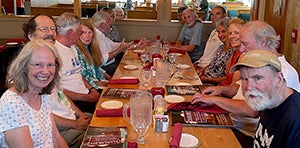
The husband of Linda Stathoplos, Ph.D.’89, John Lillibridge, worked for GSO Professor Emeritus Tom Rossby. John’s 70th birthday party in Vermont was attended by many GSO friends. Clockwise from left: Karen Tracey, Paul Berkman, M.S. ’86, Ph.D. ’99, Todd Sowers, M.S. ’87, Ph.D. ’91, Julie (Hambrook) Berkman, George Milkowski, M.S. ’85, Kate Austin, Arthur Mariano, Ph.D. ’86, Joe Orchardo, Molly (Murphy) Orchardo, M.S. ’85, Maggie Peacock, M.S. ’95, Tom Kessler, and Greg Tracey, Ph.D. ’88.
1990s
The book, Travels through the Heartand Soul of New Englandd,by Ted Reinstein includes an interview with Veronica Berounsky, Ph.D. ’90, about her research on the Pettaquamscutt Estuary and her advocacy work with the Narrow River Preservation Association.
2000s
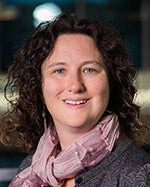
The U.S. National Science Foundation (NSF), in collaboration with Every Page Foundation (EPF), announced 22 women science leaders as the 2024 NSF-EPF Ocean Decade Champions. Among them is Rebecca Asch, M.S. ’06, a professor at East Carolina University who is being recognized for her work as a fisheries oceanographer researching interactions between fish reproduction, fish early life history, plankton ecology, climate change and climate variability.
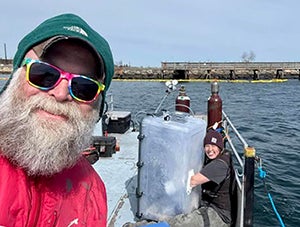
In March, Brad Hubeny, Ph.D. ’05, started the field season in Salem Harbor for his lab at Salem State University. One of the highlights was using their self-made core-length anerobic chamber (in photo) while on the boat. Hubeny, chair of the geological sciences department, was featured in a video about the importance of lab and field work to their department.
For the second time, Pat Kelly, M.S. ’01, went on a research cruise to the Southern Ocean with GSO Professor Becky Robinson and her lab. He kept the pumps working to collect water and particle samples and study how diatoms build their nitrogen and silicon-rich shells.
On May 5, Eric Morgan, M.S. ’07, and Ralph Keeling published an article in Bulletin of the Atomic Scientists titled, “How the dismantling of NOAA threatens the Keeling Curve.” In it they discuss how funding is now in jeopardy for the resources and staff to measure carbon dioxide levels at Mauna Loa and at other sites.
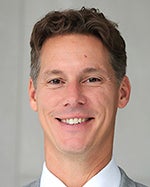
In March, Whitley Saumweber, Ph.D. ’05, was interviewed by Japanese news broadcaster NHK World about the role of China in illegal, unreported and unregulated (IUU) fishing. He notes that China is involved with countries throughout the world, particularly the Global South, in the story “The Hunt for the Dark Fleets.”
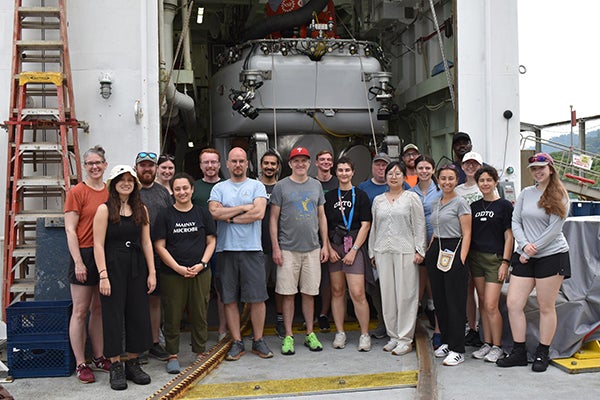
On April 29, while diving in the human occupied vehicle (HOV) Alvin along the floor of the Pacific Ocean, Andrew Wozniak, M.S.’04, of the University of Delaware, and colleagues witnessed an active eruption along the mid-ocean ridge, The New York Times reported. The day before the same area was full of deep-sea life, now it was covered by lava. Also on that research cruise, but on a different Alvin dive, was Wozniak’s post doc, Sam Katz, M.S. ’21, Ph.D. ’24. The blog on the cruise, “Vent-uring into the Deep,” includes Katz’s wonderment at looking out from Alvin for the first time and “the images you’ve seen on the screen in the past are suddenly 3-D, and you have a new sense of scale and perspective for these immense topographic features down there.”
2010s
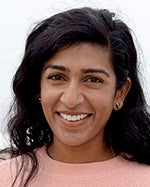
Anupa Asokan, M.O. ’12, M.B.A. ’12, founded Fish On to represent conservation-minded anglers and spearfishers in ocean policy. She also independently published a new paper in Frontiers in Marine Science titled “Marine protected areas as a tool for environmental justice,” that challenges our current system of ocean management and outlines the opportunity of marine protected areas as a tool for environmental justice.
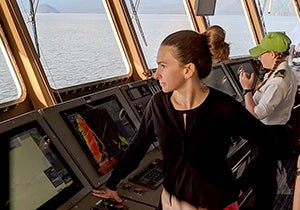
Katy Croff Bell, Ph.D.’11, of the Ocean Discovery League, and collaborators collected more than 43,000 records of deep-sea dives and calculated that only a tiny portion of the entire deep seafloor has been examined. Results were published May 7 in the journal Science Advances and received extensive coverage, including in The New York Times. They noted “Our maximum estimate of 3,823 km2, or 0.001% of the deep seafloor, geographically compares to roughly the smallest U.S. state, Rhode Island (2,678 km2).
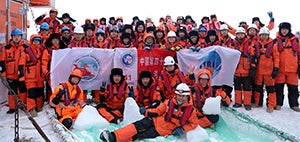
Alison Cleary, M.S. ’10, Ph.D. ’14, is a molecular ecologist at the British Antarctic Survey. She recently returned from a cruise called JTRES, the Joint Twilight Ross Sea Ecosystem Studies, which brought together researchers from nine countries to better understand how Antarctic ecosystems work in the autumn and winter when sunlight is decreasing and ice covers much of the ocean.
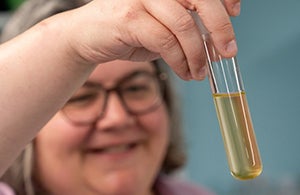
Elizabeth (Liz) Harvey, Ph.D.’13, associate professor of biological sciences at the University of New Hampshire, has been monitoring phytoplankton in the Gulf of Maine to look at signals of climate change. She notes, “if we start seeing significant changes in phytoplankton populations, it could directly affect the rest of the marine organisms present.”
One of the Salem State University undergraduates who did lab and field work with Brad Hubeny, Ph.D.’05, was Cameron Morissette, M.S. ’14, who later earned a full scholarship to GSO. John King was the major professor for both. Morissette was cited as a leader and named to the “40 Under 40” for Salem State University.
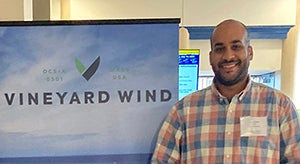
Steven Tadros, ’16, M.O. ’17, has been promoted to manager of public affairs at Avangrid. He will continue the progress of their Vineyard Wind 1 and New England Wind 1 projects, along with relationships and partnerships with Tribal Nations and local communities.

Alum Fund News
Thirteen students received awards from the GSO Alum Fund for 2024-2025 projects and conference travel. These students will be going to field work in Alaska, cruises in Canada and the Arctic, conferences in Hawaii, Louisiana, North Carolina, Massachusetts and Europe, and earning certificates in SCUBA and small boat operations. A portion of these awards came from funds donated in honor of GSO Professor Emeritus Michael E.Q. Pilson. Thank you for your generosity.
2020s
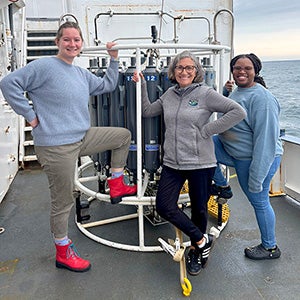
In early May, on EN729, three graduates of the Menden-Deuer Lab sailed together on R/V Endeavor. (Left to right) Erica “Rickie” Ewton, Ph.D.’25, Françoise Morison, M.S. ’14, Ph.D.’16, and Andria Miller, M.S.’23, were carrying out studies on the planktonic food web on Georges and Stellwagen Banks.
Basia Marcks, Ph.D. ’23, is a senior program director at the Ocean Defense Initiative, a not-for-profit organization which promotes U.S. leadership on ocean-based climate solutions and defends against U.S. policies that are harmful for ocean, climate, and communities. On April 25, she gave a webinar for the URI Marine Affairs Department series titled “State of Marine Affairs.”
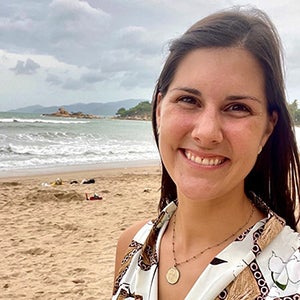
Victoria Fulfer, M.S. ’19, Ph.D. ’24, is now a postdoctoral fellow at GSO studying how microplastics get into water, and she also works for the 5 Gyres Institute, a nonprofit group researching plastic pollution. Her recent report notes, “For the first time, we have been able to measure tiny particles, as small as 0.03 millimeters, and determine not just their prevalence, but also identify the type of product that they originated from.” She was also on NBC’s TODAY show, demonstrating how the tiny particles come off plastic containers and cutting boards.
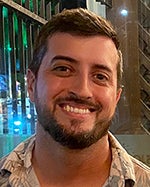
Afonso Gonçalves Neto, Ph.D. ’21, started a new job as a scientific researcher and writer at SubCom, a telecommunications company working on subsea networks.
Sarah Nickford, Ph.D. ’23, spent the past year as a Knauss Fellow at the U.S. Integrated Ocean Observing Systems office in the National Ocean Service of the National Ocean and Atmospheric Administration, and now is a postdoctoral scholar at the University of Washington’s Cooperative Institute for Climate, Ocean, and Ecosystem Studies (CICOES). There she will continue studying the air-sea exchange of carbon dioxide using observations collected by autonomous and moored platforms.
A. Francis “Frank” DiMeglio
A. Francis “Frank” DiMeglio passed away on March 25, 2025 at the age of 94. A nuclear engineer, Frank served as the director of the Rhode Island Nuclear Science Center (RINSC) from when “the reactor” was first built in 1962 until he retired in 1990.
Joyce Westcott Downey
Retired GSO Coordinator of Library Services Professional/Scientific Collection Joyce Westcott Downey, 77, passed away on January 9, 2025. During her tenure, Joyce helped to plan, and then oversaw, the move of Pell Library to the top floor of the newly built Ocean Science and Exploration Center in April 2009. She retired in 2021, after 21 years of service.
Robert Lorrain Hempstead
A former captain of R/V Trident, Captain Robert Lorrain Hempstead, of Exeter, R.I., passed away on February 23, 2025, at the age of 97. He served as chief mate with Captain Barnes Collinson aboard R/V Trident in 1962 and then served as captain in 1963 and 1964.
Barry J. Huebert
Former GSO Professor Barry J. Huebert, 80, passed away on March 14, 2024. Huebert was a pioneer in the field of atmospheric chemistry and a leader in the development of international air-sea exchange and atmospheric chemistry research programs. He was a member of the GSO faculty, specifically the Center for Atmospheric Chemistry Studies, from September 1987 to October 1992. At GSO, Huebert graduated two Ph.D. students and two M.S. students and taught courses in the areas of atmospheric chemistry and biogeochemical cycles.
Mary Jane Guertin McNulty
Mary Jane Guertin McNulty, age 74, formerly of North Providence, passed away on February 23, 2025, in Loris, S.C. Mary Jane worked at GSO from October 1973 to December 1993. She was usually located in GSO’s Fish Building, most of the time working for Richard McGannon. While at GSO, Mary Jane met and married GSO campus security officer, Jim McNulty.
Neil Williams Ross
Neil Williams Ross, died in Kingston, R.I., on October 23, 2024, at the age of 84. His career at GSO began in 1968 as New England’s first extension agent for URI’s Sea Grant Marine Advisory Service. Neil left his mark on GSO when in 1979 he came up with the idea of the first “Harpoon Seminar” and gave the first April Fool’s Day scientific spoof seminar.
Claire Sherman
Retired GSO secretary Claire Sherman passed away on January 17, 2025 at the age of 93. Claire worked for GSO Professors Robert Detrick and the late Roger Larson and retired after 25 years at URI.
Dorothy (Dotty) Garrison Swift
Dorothy (Dotty) Garrison Swift, Ph.D., passed away on January 7, 2025 at age 85. She worked as a marine research associate at GSO, served URI in various capacities, and later taught at several state colleges.
Carol (Cummings) Vaseleski
Carol (Cummings) Vaseleski, M.S.’76, Ph.D. ’83, a student of Michael E.Q. Pilson who also worked as a Graduate Research Assistant at MERL, passed away on October 27, 2024 in Michigan, at the age of 73. She spent her career at Amoco Corporation in Chicago where she started by helping to assess the environmental effects of the tanker Amoco Cadiz oil spill off the coast of France and ended up later developing a compliance review department to audit world-wide facilities.

